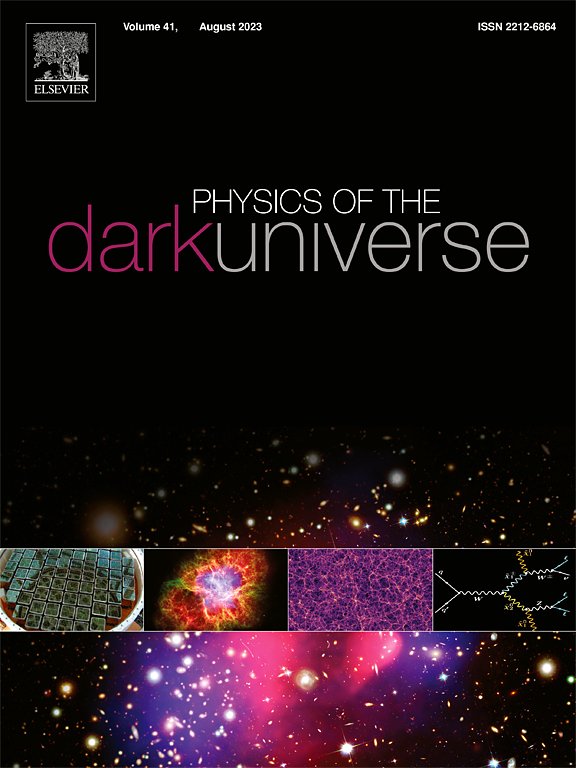Dark matter spike surrounding supermassive black holes binary and the nanohertz stochastic gravitational wave background
IF 6.4
2区 物理与天体物理
Q1 ASTRONOMY & ASTROPHYSICS
引用次数: 0
Abstract
The NANOGrav, PPTA, EPTA, CPTA and MPTA collaborations have reported compelling evidence for the existence of the Stochastic Gravitational-Wave Background (SGWB). This inferred background’s amplitude and frequency spectrum align closely with the astrophysical predictions for a signal originating from the population of supermassive black hole (SMBH) binaries. Considering these findings, we explore the possibility of detecting dark matter (DM) spikes surrounding SMBHs, which could alter the gravitational-wave waveform and influence the SGWB. We show that the evolution of SMBH binaries, driven by both gravitational radiation and the dynamic friction of the surrounding DM spike, presents observable effects in the nHz frequency domain of the SGWB. We also employ the Bayesian inference method to fit the SGWB spectra from the NANOGrav, EPTA, and PPTA. The model with DM spike improves the fittings to the former two data sets. The spike slope is slightly smaller than 1, which may suggest that the spike is flattened during the inspiral of the SMBHBs.
超大质量黑洞双星和纳赫兹随机引力波背景周围的暗物质尖峰
nanogravity, PPTA, EPTA, CPTA和MPTA合作报告了随机引力波背景(SGWB)存在的令人信服的证据。这个推断出的背景的振幅和频谱与天体物理学对来自超大质量黑洞(SMBH)双星群的信号的预测非常吻合。考虑到这些发现,我们探索了探测SMBHs周围暗物质(DM)尖峰的可能性,这可能会改变引力波波形并影响SGWB。我们发现,在引力辐射和周围DM尖峰的动态摩擦的驱动下,SMBH双星的演化在SGWB的nHz频域呈现出可观察到的影响。我们还采用贝叶斯推理方法拟合了来自NANOGrav、EPTA和PPTA的SGWB光谱。DM尖峰模型改善了对前两个数据集的拟合。尖峰斜率γsp略小于1,说明在smbhb的激励过程中,尖峰被压平。
本文章由计算机程序翻译,如有差异,请以英文原文为准。
求助全文
约1分钟内获得全文
求助全文
来源期刊

Physics of the Dark Universe
ASTRONOMY & ASTROPHYSICS-
CiteScore
9.60
自引率
7.30%
发文量
118
审稿时长
61 days
期刊介绍:
Physics of the Dark Universe is an innovative online-only journal that offers rapid publication of peer-reviewed, original research articles considered of high scientific impact.
The journal is focused on the understanding of Dark Matter, Dark Energy, Early Universe, gravitational waves and neutrinos, covering all theoretical, experimental and phenomenological aspects.
 求助内容:
求助内容: 应助结果提醒方式:
应助结果提醒方式:


